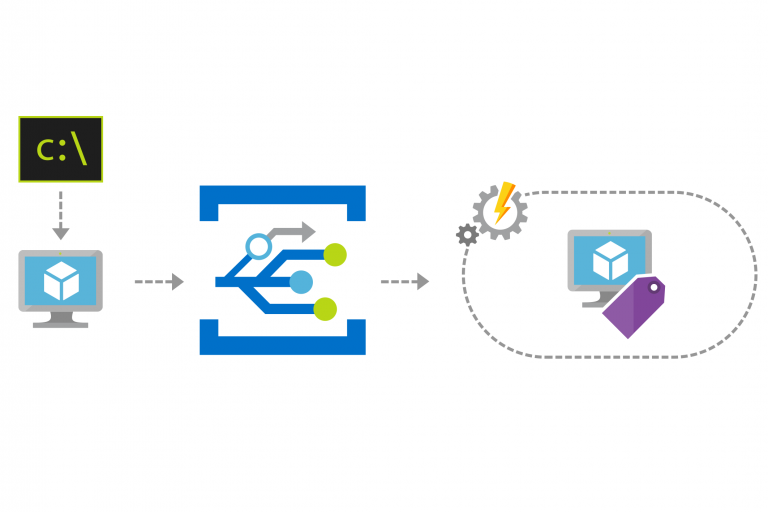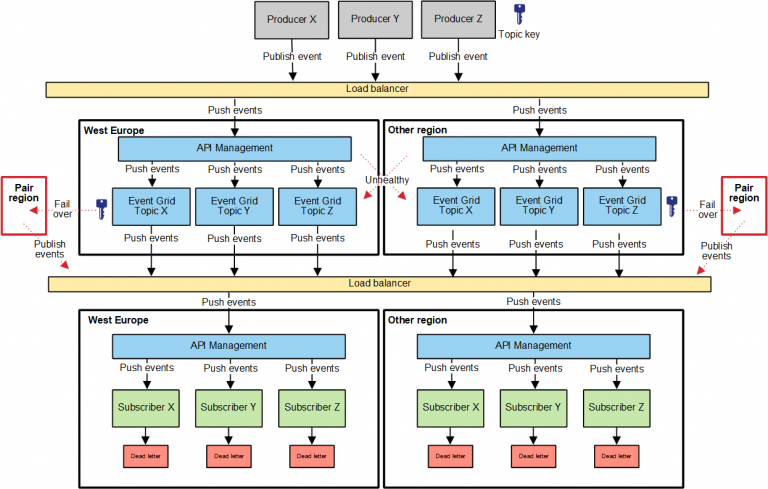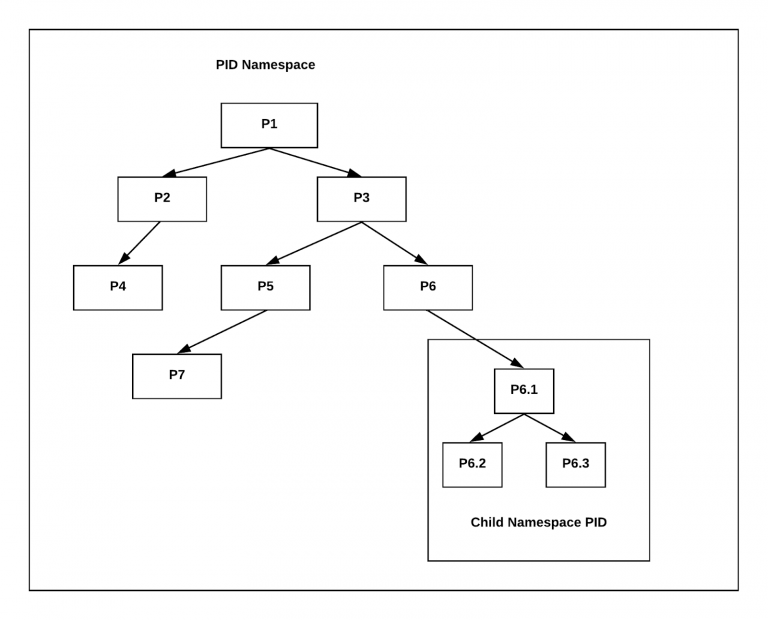- An Overview of AWS Machine Learning Tutorial
- Mapplet In Informatica | Purpose and Implementation of Mapplets | Expert’s Top Picks | Free Guide Tutorial
- Spring Cloud Tutorial
- Azure IoT Hub Integration Tutorial | For Beginners Learn in 1 Day FREE
- Cloud Native Microservices Tutorial | A Comprehensive Guide
- Azure Stream Analytics | Learn in 1 Day FREE Tutorial
- Azure Data Warehouse | Learn in 1 Day FREE Tutorial
- AWS Lambda Tutorial | A Guide to Creating Your First Function
- Azure Logic Apps Tutorial – A beginners Guide & its Complete Overview
- Azure Service Bus Tutorial | Complete Overview – Just An Hour for FREE
- Introduction to Azure Service Fabric Tutorial | Learn from Scratch
- Amazon CloudWatch Tutorial | Ultimate Guide to Learn [BEST & NEW]
- AWS Data Pipeline Documentation Tutorial | For Beginners Learn in 1 Day FREE
- What is Azure App Service? | A Complete Guide for Beginners
- AWS Key Management Service | All You Need to Know
- Apigee Tutorial | A Comprehensive Guide for Beginners
- Kubernetes Tutorial | Step by Step Guide to Basic
- AWS SQS – Simple Queue Service Tutorial | Quickstart – MUST READ
- AWS Glue Tutorial
- MuleSoft
- Cloud Computing Tutorial
- AWS CloudFormation tutorial
- AWS Amazon S3 Bucket Tutorial
- Kubernetes Cheat Sheet Tutorial
- AWS IAM Tutorial
- Cloud Concepts And Models Tutorial
- Cloud Network Security Tutorial
- Azure Active Directory Tutorial
- NetApp Tutorial
- OpenStack tutorial
- AWS Cheat Sheet Tutorial
- Informatica Transformations Tutorial
- AWS vs AZURE Who is The Right Cloud Platform?
- How to Host your Static Website with AWS Tutorial
- VMware Tutorial
- Edge Computing Tutorial
- Cognitive Cloud Computing Tutorial
- Serverless Computing Tutorial
- Sharepoint Tutorial
- AWS Tutorial
- Microsoft Azure Tutorial
- IOT Tutorial
- An Overview of AWS Machine Learning Tutorial
- Mapplet In Informatica | Purpose and Implementation of Mapplets | Expert’s Top Picks | Free Guide Tutorial
- Spring Cloud Tutorial
- Azure IoT Hub Integration Tutorial | For Beginners Learn in 1 Day FREE
- Cloud Native Microservices Tutorial | A Comprehensive Guide
- Azure Stream Analytics | Learn in 1 Day FREE Tutorial
- Azure Data Warehouse | Learn in 1 Day FREE Tutorial
- AWS Lambda Tutorial | A Guide to Creating Your First Function
- Azure Logic Apps Tutorial – A beginners Guide & its Complete Overview
- Azure Service Bus Tutorial | Complete Overview – Just An Hour for FREE
- Introduction to Azure Service Fabric Tutorial | Learn from Scratch
- Amazon CloudWatch Tutorial | Ultimate Guide to Learn [BEST & NEW]
- AWS Data Pipeline Documentation Tutorial | For Beginners Learn in 1 Day FREE
- What is Azure App Service? | A Complete Guide for Beginners
- AWS Key Management Service | All You Need to Know
- Apigee Tutorial | A Comprehensive Guide for Beginners
- Kubernetes Tutorial | Step by Step Guide to Basic
- AWS SQS – Simple Queue Service Tutorial | Quickstart – MUST READ
- AWS Glue Tutorial
- MuleSoft
- Cloud Computing Tutorial
- AWS CloudFormation tutorial
- AWS Amazon S3 Bucket Tutorial
- Kubernetes Cheat Sheet Tutorial
- AWS IAM Tutorial
- Cloud Concepts And Models Tutorial
- Cloud Network Security Tutorial
- Azure Active Directory Tutorial
- NetApp Tutorial
- OpenStack tutorial
- AWS Cheat Sheet Tutorial
- Informatica Transformations Tutorial
- AWS vs AZURE Who is The Right Cloud Platform?
- How to Host your Static Website with AWS Tutorial
- VMware Tutorial
- Edge Computing Tutorial
- Cognitive Cloud Computing Tutorial
- Serverless Computing Tutorial
- Sharepoint Tutorial
- AWS Tutorial
- Microsoft Azure Tutorial
- IOT Tutorial

Azure Service Bus Tutorial | Complete Overview – Just An Hour for FREE
Last updated on 10th Aug 2022, Blog, Cloud Computing, Tutorials
Introduction
This pillar page tries to deal with all that one has to fathom the Azure Service Bus. For a far better understanding of the ideas, a real-world business situation is taken into account throughout the article, regulator Cab booking application. This application is constructed victimizing Azure Serverless services like Service Bus, Logic Apps, Event Hubs, Event Grid, Relay, Storage blob, and Azure Functions. There are 2 main parts within the application, the Vehicle Telematics application to gather real time knowledge of the cabs to supply necessary data for booking. The service map below illustrates however will every service act with one another to create the business application. This article would specialize in the highlighted Service Bus Queues and Topics within the booking application. allow us to begin.
What is an Azure Service Bus?
Azure Service Bus may be an electronic messaging service on cloud accustomed to connect any applications, devices, and services running within the cloud to the other applications or services. As a result, it acts as an electronic messaging backbone for applications out there within the cloud or across any devices.
Compare Azure electronic messaging Services:

Azure electronic messaging services have evolved over time with multiple choices. It’s vital to grasp all the choices to form the proper call once to use what service. At the face of it, the technologies may appear as if they’re doing just about constant factor, however there can be important variations and there’s a reason for his or her existence.
Azure Storage Queues:
Azure Storage Queue may be a service for storing giant numbers of messages that may be accessed from a place within the world via genuine calls victimization HTTP or HTTPS. one queue message is up to sixty four kilobyte in size, and a queue will contain ample messages, up to the entire capability limit of a storage account.
In systems that need intense process, handling it beat one method is just about not possible. doable process failures, outages, hardware limitations, or value constraints inflicted to divide work into chunks and distribute to processes that may handle it. This additionally helps with the responsibilities concerned, wherever a method doesn’t have to assume all the responsibilities and switch into a monolithic system. The approach is to divide work among processes and distribute or delegate among alternative processes. While this approach sounds straight-forward, many concerns ought to be created like temporal coupling, outages, workloads, and more.
Azure Service Bus:
While Storage Queues service provides the required means that for queueing, there are domains wherever you need real electronic messaging. Usually, which means supporting options that involve cypher and process behind the scenes on behalf of the service. That’s wherever Azure Service Bus (ASB) service shines. The options it provides are genuinely impressive. a number of those are:
- Scheduling
- Dead-lettering
- Transactional process
- Message ordering
- Expiration (TTL)
- Duplicate detection
- Deferring
- Pub/Sub
- Filtering
- And much, much more
- Event Hubs
So far, the main focus was on individual messages wherever every message is separate and vital. With ASB there’s support for messages that represent events, however those aren’t streams of events. situations like mensuration need a special approach to handling messages. Ability to capture events that attain high volumes. That’s wherever a 3rd Azure message service comes in, Event Hubs. this can be a service that’s specifically designed to take care of event streams.
With exceptional ingress rates, it will defy several incoming messages storing those internally giving no queue linguistics. whereas it would sound sort of an important downside, it’s extremely optimized for the one job it’s – store events to permit later process by the customers on their terms and conditions. customers are those that manage events browsing and choose where to maneuver the reading pointer forward or return to already read messages. With this level of power comes the responsibility to manage the pointer. Often, knowledge browse is streamed into alternative services for analysis or persistence. Event Hub, Capture feature helps thereupon by permitting sporadically export events to Storage Blob service victimization Avro format.
The service has process power and is expressed in turnout Units, wherever every TU is capable of up to oneMB/s or 1,000 msgs/s of ingress and twoMB/s or 2,000 msgs/s of egress. whereas TUs should be pre-allocated, EH service offers automotive vehicle Inflation feature, preventing message intake from ever being throttled. Dedicated tier of the service additionally offers Associate in Nursing extended event retention amount. EH is creating an aware preference in favor of turnout over options.
Event Grid:

Event Grid (EG) is one in all the comparatively latest additions to the Azure electronic messaging services family. This child service is creating massive splashes and now and then sounds like a threat to its older siblings. After all, the queries it raises are valid.
a)What was missing there that a fourth electronic messaging service had to be introduced?
b)How is it totally different from Azure Storage Queue, Azure Service Bus Queue, and Event Hub?
c)Is Event Grid progressing to replace a number of the opposite electronic messaging services?
To answer these, let’s see what issues already exist that electronic messaging services didn’t address that Event Grid will. The world we have a tendency to board is reactive. Events ensue, and we reply to those events. The reactive nature of Azure services isn’t any exception to the current paradigm. A new updated blob to Storage service has to be processed to import knowledge into CosmosDB. A provisioned resource has to be labeled. Ability to send word subscribers scaled-out between multiple regions with non-ubiquitous receiving mechanisms (webhooks, queues, streams, etc).
Reacting to the events happening on a cloud-scale isn’t what the electronic messaging services coated earlier were designed for. That’s what Event Grid was created for. Event Grid’s whole purpose is to permit publication and handling events crossing data center boundaries, low cost and simple, serving with building reactive design. As of nowadays, Event Grid is already supporting many Azure services capable of publication events.
Those services are:
- Blob Storage
- Storage (v2)
- Event Hubs
- Service Bus (Premium)
- IoT Hub
- Container register
- Resource teams
Additionally, Event Grid supports Custom Topics, increasing this paradigm outside of Azure. once it involves subscribing to Event Grid topics and handling events, presently supported choices embrace the following:
Custom WebHooks: Use webhooks for customizable endpoints that reply to events.
Azure Functions: Use Azure Functions for serverless response to events.
Logic Apps: Use Logic Apps to modify business processes for responding to events.
Storage Queues: Use Queue storage to receive events that require to be force. By causing events to Queue storage, the app will pull and method events on its own schedule.
Event Hubs: Use Event Hubs once your answer gets events quicker than it will method the events.
Azure Automation: Use Azure Automation to method events with machine-controlled runbooks.
Hybrid Connections: Use Azure Relay Hybrid Connections to send events to applications that are at intervals associate degree enterprise network and don’t have a publically accessible end point.
The list is brief, however it’ll expand to support all the Azure services. And eventually, not simply Azure services, however on the far side that. With already supported CNCF (Cloud Native reckon Foundation) CloudEvents v0.1, Event Grid will interchange messages with any system supporting this open normal for events. Event Grid’s ability to method countless messages and being platform or language agnostic, it’s the go-to electronic messaging service to distribute notifications and build reactive solutions on prime of it. Despite its hypertext transfer protocol nature, the service is designed for dependability. intrinsical retries and dead-lettering provide uncompromisable guarantee that events aren’t lost. within your means to permit large scale event commercial enterprise and distribution.
Messaging Services for the regulator application:
Let us contemplate a Flywheel Cab booking System delineated within the summary, wherever customers rent cabs and do payments to drivers. This business state of affairs demands for transactions and people usher in the necessity to use Azure Service Bus. It’s additionally needed to possess instant consistency, temporal management like if this is often not processed in x quantity of minutes then the message ought to be pushed into the dead letter or elsewhere for associate degree increase. once the necessity is these forms of musical group (workflow) stuff {to do|to try to to|to try associate degreed do} state transitions then Azure Service Bus is an applicable answer.
It’s like IBM MQ or BizTalk Server, but at cloud scale. during a shell, once you would like strength and can’t afford to lose any messages, you’ll select Azure Service Bus. The Vehicle Telematics Application needs to gather real time telematics knowledge from thousands of vehicles across the globe. The simplest electronic messaging service that may match this demand would be ‘Event Hub’. Azure Event Hub is meant to specialize in the information purpose event state of affairs.
This application needs to handle multiple knowledge streams from completely different publishers in parallel. Event Hubs support a partitioning model that permits keeping connected events along whereas facultative quick and extremely parallelized process of the individual streams that are multiplexed through the Event Hubs. The Event Hubs Capture feature mechanically writes batches of captured events into the Azure Storage blob containers and permits a timely batch-oriented process of events.
When reactions occur within the business like, the driving force had accepted the booking, the driving force is moving towards the pick-up purpose, the client or driver off the booking during this case rather than doing a central management work flow you’d waste associate degree Event-based model running active workflows. Here you’re reacting to real changes in real time. Azure Event Grid is right for these forms of reactive situations.
Next steps:
- Azure Service Bus summary
- Azure Crossroads by Sean Feldman
- Azure Service Bus, Event Hub, Event Grid – that one to choose?
- Azure Event Hubs vs Service Bus
- Azure Service Bus Topics vs Event Grid
Concepts:
With this understanding of once settling on an electronic messaging service, allow us to currently specialize in Service Bus Queues and Topics during this article. Following are the necessity to grasp Azure Service Bus terminologies.
Namespaces:

A namespace may be a scoping instrumentation for all electronic messaging elements. Multiple queues and topics will reside at intervals in one namespace, and namespaces typically function as application containers.
Messages are sent to and received from queues. Queues alter you to store messages till the receiving application is obtainable to receive and method them. Once accepted, the message is controlled safely in redundant storage.